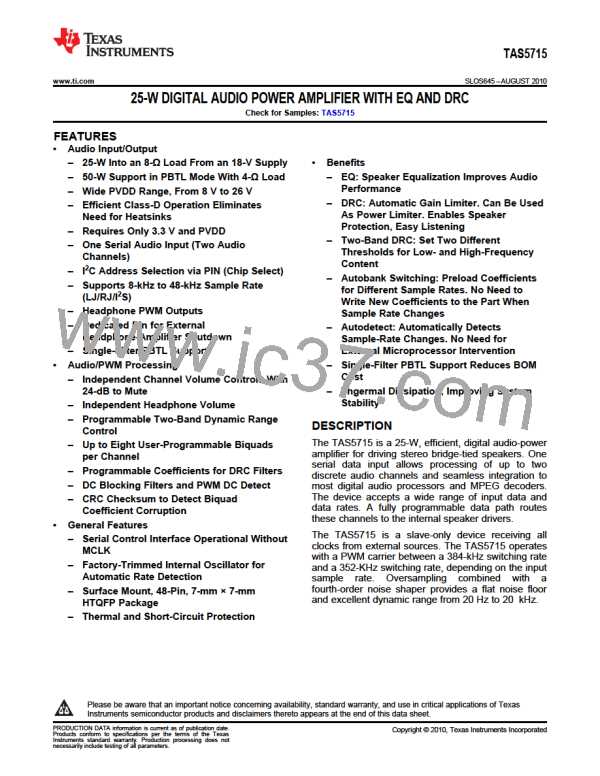TAS5715
SLOS645 –AUGUST 2010
www.ti.com
Attack and release events occur only when level remains above or below the threshold continuously during the
time-constant time. And the constant time is controlled by the attack/release rate. If the attack/release rate is
short, DRC operates frequently. Attack time defines how fast to cut the signal to bring it under the threshold.
Similarly, release time defines how fast to release the cut back to normal. Attack and release are shown in
Figure 50.
Threshold
INPUT
Threshold
OUTPUT
Attack Rate
Release Rate
W0003-01
Figure 50. Attack/Release
The device should be in all-channel shutdown when DRC parameters are changed. The TAS57X GDE (GUI)
takes care of this when changing DRC parameters.
TAS5715 supports two-band and one-band DRC. Two-band DRC helps to get the maximum sound levels out of
small, thin, low-cost speakers. It protects speakers from being overdriven/damaged and stops cabinet rattle
without sacrificing loudness.
In the two-band DRC mode, audio is split into to high-band and low-band. The bands have separate thresholds
and attack/decay filters.
Configuration is as shown in Figure 51. DRC1 (upper band) and DRC2 (lower band) can be programmed using
GDE. Default values for attack and decay filters cover most of the cases. Only thresholds require updating,
depending on the power levels for the upper and lower bands.
36
Submit Documentation Feedback
Copyright © 2010, Texas Instruments Incorporated
Product Folder Link(s): TAS5715

 TI [ TEXAS INSTRUMENTS ]
TI [ TEXAS INSTRUMENTS ]